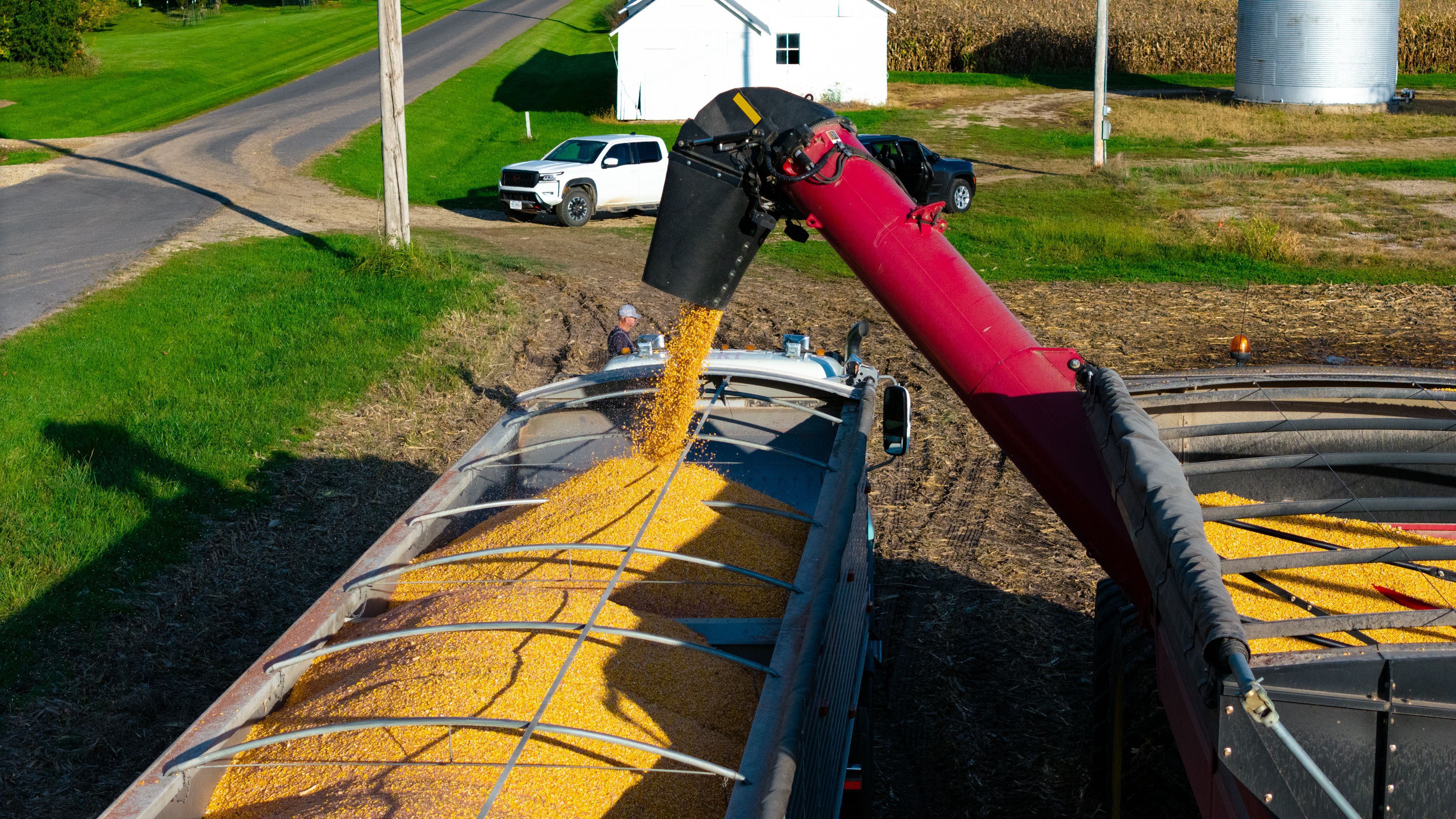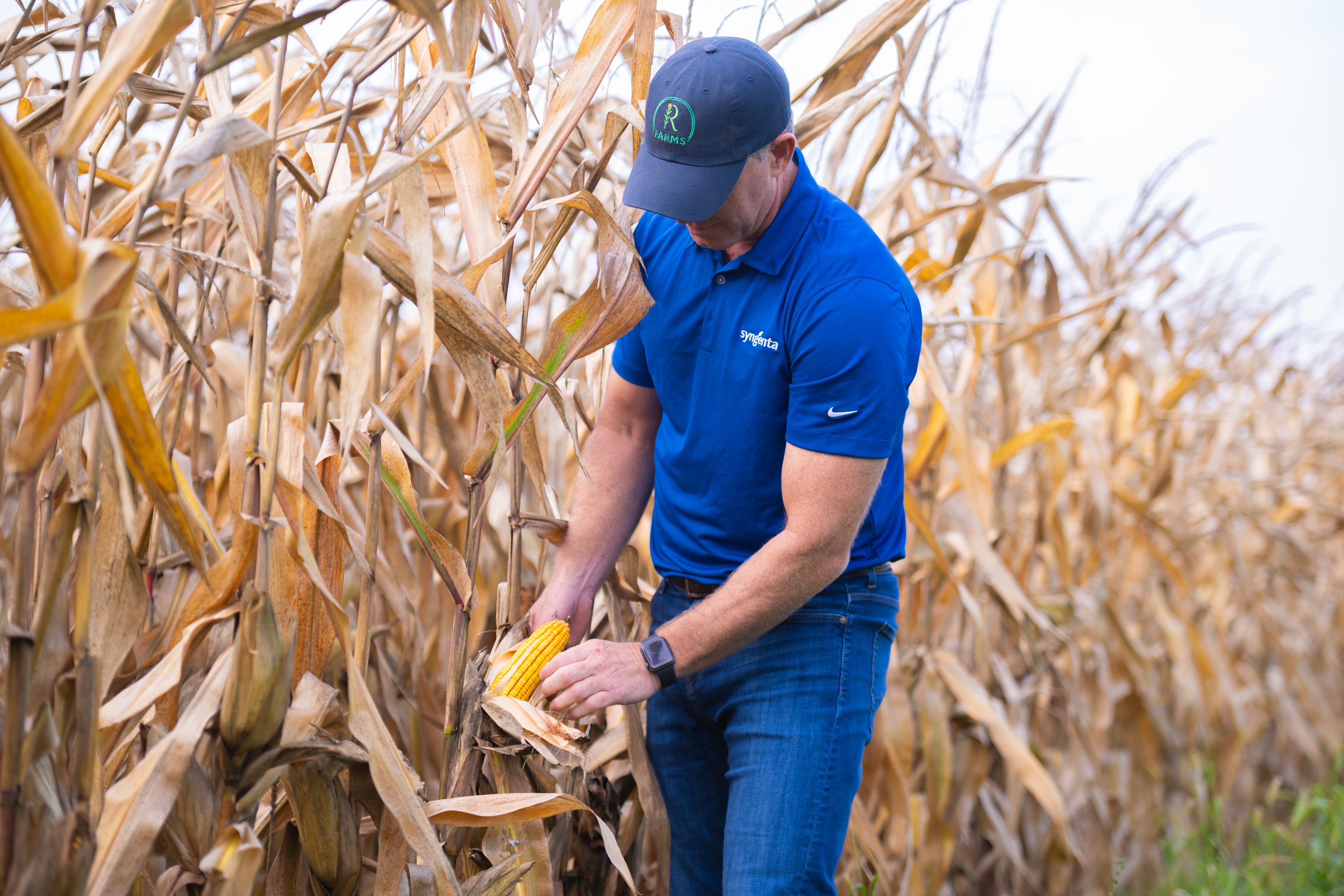Measuring soil health with an eye on the future
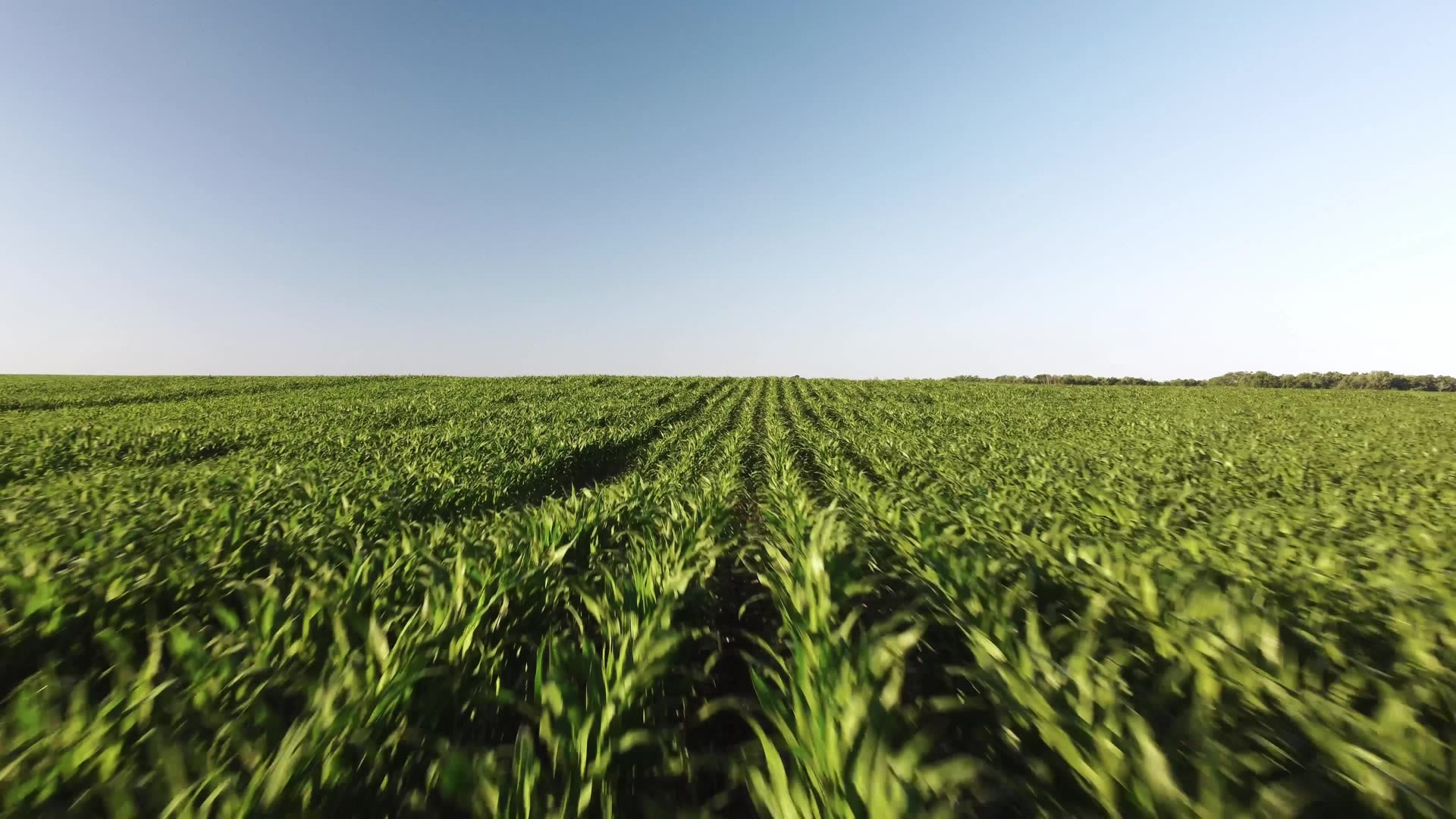
Across northern Illinois, for as far as the eye can see, fields of corn and soybeans grow in some of the darkest, most fertile earth to be found anywhere in the world.
“Our soil is super rich,” a local farmer said, as he prepared to haul a brimming truckload of corn from the field to the silo during the autumn harvest. “It doesn’t get much better than this.”
Jeff Rowe, President of Syngenta Crop Protection, who in January 2024 becomes the new CEO of Syngenta Group, couldn’t agree more with his neighbor here in the U.S. corn belt. And Rowe noted that soil health can’t be taken for granted — it must be protected, nurtured and enhanced for future generations. “Soil has a high organic matter,” Rowe said, “but that doesn’t mean it will be that way forever.”
The Rowe family has taken a variety of steps over the years to build and maintain healthy soil across its 3,000-acre farm. Fields have been graded in some areas to conserve water by reducing runoff. No-till and low-till methods leave mulch on the ground, a source of nutrition during the off season. And the farm has started using cover crops to further protect and preserve the soil, which Rowe calls “any farmer’s most important asset.”
A brimming truckload of corn from the field
A brimming truckload of corn from the field
Jeff Rowe, President of Syngenta Crop Protection, who in January 2024 becomes the new CEO of Syngenta Group
Jeff Rowe, President of Syngenta Crop Protection, who in January 2024 becomes the new CEO of Syngenta Group
Across northern Illinois, for as far as the eye can see, fields of corn and soybeans grow in some of the darkest, most fertile earth to be found anywhere in the world.
“Our soil is super rich,” a local farmer said, as he prepared to haul a brimming truckload of corn from the field to the silo during the autumn harvest. “It doesn’t get much better than this.”
A brimming truckload of corn from the field
A brimming truckload of corn from the field
Jeff Rowe, President of Syngenta Crop Protection, who in January 2024 becomes the new CEO of Syngenta Group, couldn’t agree more with his neighbor here in the U.S. corn belt. And Rowe noted that soil health can’t be taken for granted — it must be protected, nurtured and enhanced for future generations. “Soil has a high organic matter,” Rowe said, “but that doesn’t mean it will be that way forever.”
Jeff Rowe, President of Syngenta Crop Protection, who in January 2024 becomes the new CEO of Syngenta Group
Jeff Rowe, President of Syngenta Crop Protection, who in January 2024 becomes the new CEO of Syngenta Group
The Rowe family has taken a variety of steps over the years to build and maintain healthy soil across its 3,000-acre farm. Fields have been graded in some areas to conserve water by reducing runoff. No-till and low-till methods leave mulch on the ground, a source of nutrition during the off season. And the farm has started using cover crops to further protect and preserve the soil, which Rowe calls “any farmer’s most important asset.”
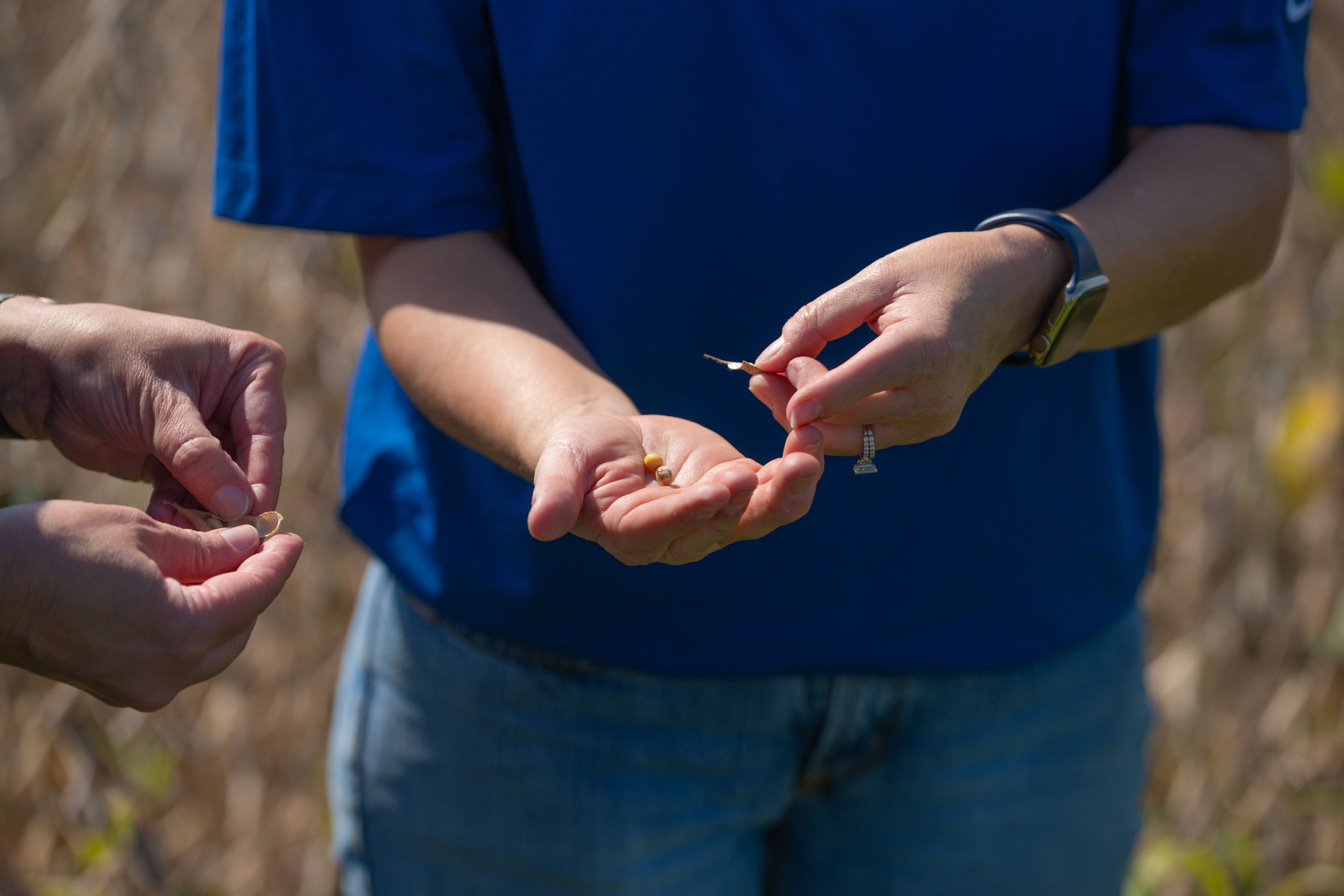
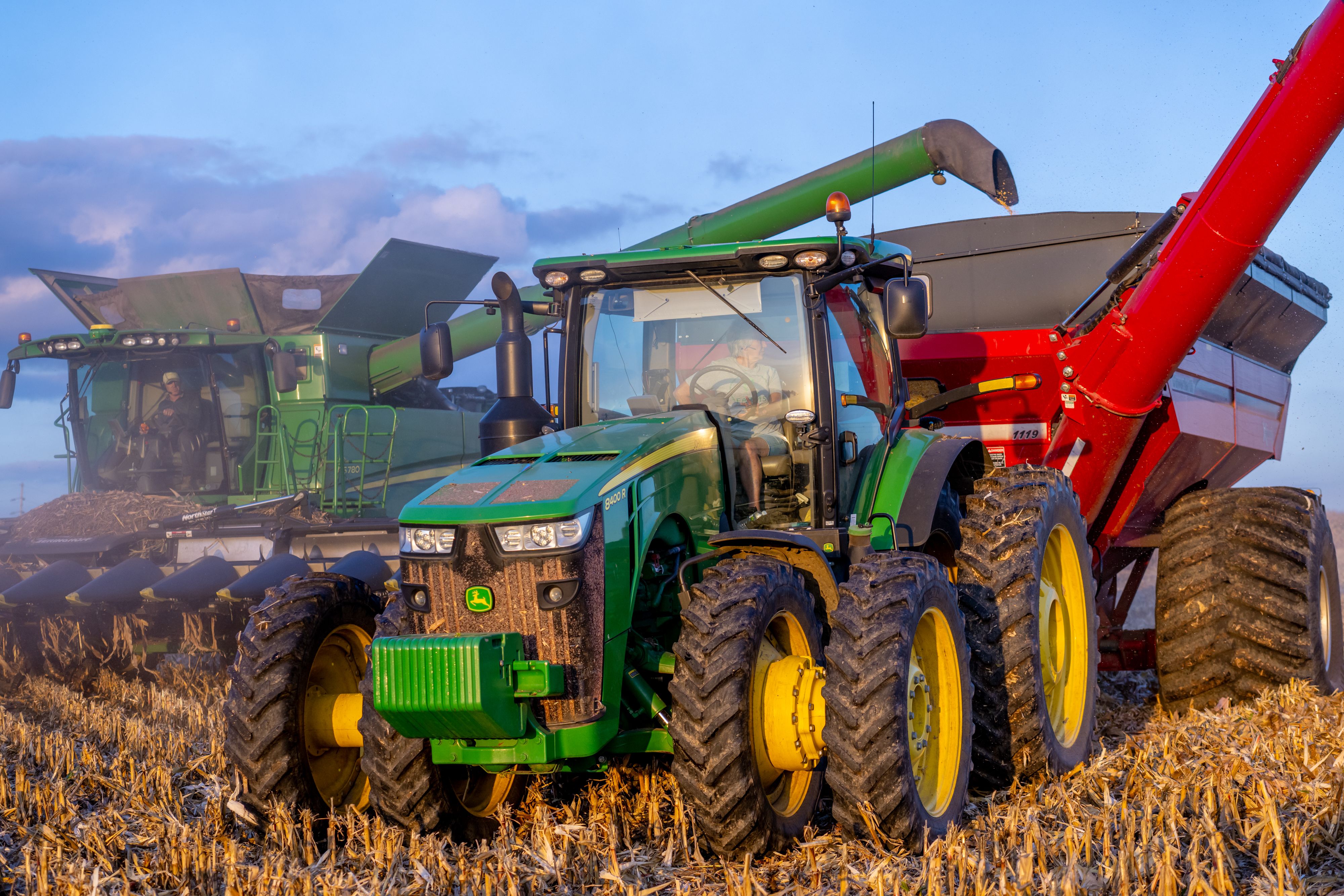
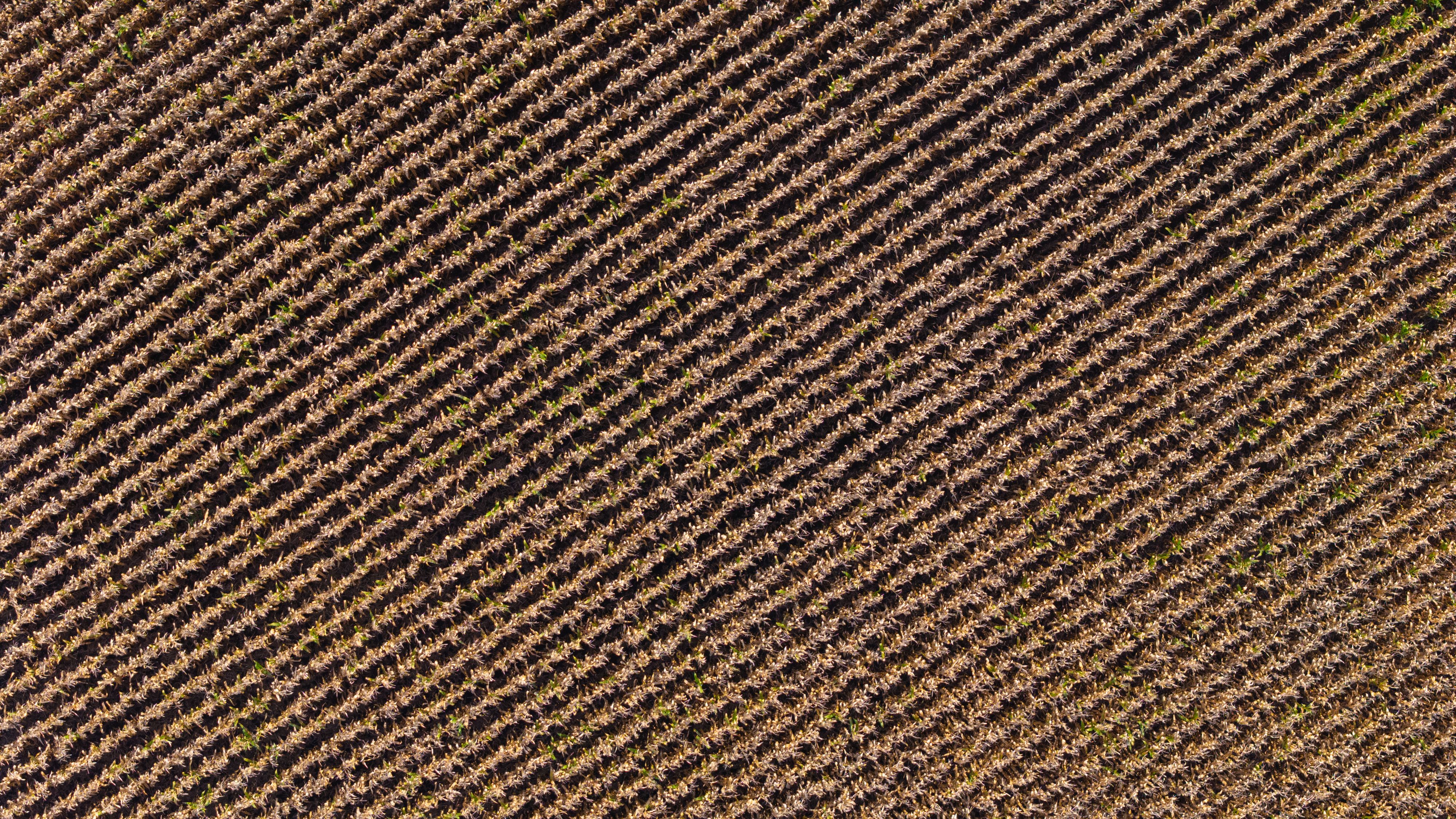
Farms and fields vary
It’s all part of a regenerative-farming philosophy. Now, as a next step in the never-ending process of soil maintenance, the Rowe farm has begun measuring and tracking key variables of soil health, including physical, biological and chemical indicators. Metrics being gauged include organic matter; hardness of surface and subsurface soil; organic, active and total carbon; and nitrogen and phosphorus levels.
This kind of detailed assessment is the early stage of a long-term undertaking. It can take 5 to 10 years to reestablish the top layer of soil after many years of tilling, erosion and exposure to the elements. As part of this initiative, the Rowes and other farmers taking part in a Syngenta soil-health program called “Bin Buster” are being monitored in accordance with Cornell University’s widely used Soil Health Assessment.
The results of soil-health assessments like this can be used in determining which crops will grow best in a particular area, as well as the appropriate use of products, such as biological solutions that control pests with the power of smell, among other natural interventions. “We’re not treating each field and farm the same,” Rowe said. “We are farming very specifically based on the soil type.”
The Rowe farm already sees early success in the way its soil health is trending. When the initiative was started, there was evidence of erosion related to water runoff on sloping terrain. So the farm installed a surface flume and adopted strip tillage, a variant of conservation tillage that limits soil disturbance to narrow planting zones. Since then, there has been a measurable improvement in available water capacity, increases in organic matter and total carbon, and decreased runoff and erosion.
“When we started this series of experiments, my expectation was that it was going to take 10 years to start to see some impact,” Rowe said. “On my farm, we’ve seen much quicker improvement.”
Top layer is critical
Syngenta is investing in products, research and development, and best practices in soil-health management to help farmers around the world. In just one example, Syngenta’s TYMIRIUM® technology helps safeguard plants from soil-borne diseases and destructive versions of nematodes—in-ground parasites that can damage roots and impair plant growth.
Rowe doesn’t expect consumers to understand all of the arcane aspects of soil-health science—like the Autoclaved Citrate Extractable (ACE) protein index, for example. But he does want everyone to know how vital soil is to agriculture’s ability to feed the world.
“That top layer of soil is critical to support life,” Rowe said. “The fact that we can get much more sophisticated about how we enhance the positive aspects of that, and manage the things that create risk, gives me enthusiasm about the future.”


